At the end of April and beginning of May, I took a big Golden Week trip westward and down through Kyushu. I have multiple friends who’ve visited or who have extended family in Fukuoka – they’ve all had nothing but great things to say about it, and likewise I’ve wanted to visit Hiroshima on my own as well. I had a week off for the holidays, so with this, plus my general enjoyment of traveling and seeing new places… and motivated by the fact that Kyushu is unequivocally the best place in Japan to get tons and tons of IC cards… I made a spreadsheet to plan and figure out how to handle all of these magnetic paper tickets:
This was my first time making (heavy) use of both stopovers (途中下車 tochuu gesha) and round-trip discounts (往復割引 oufuku waribiki), as I was traveling along a single, straight route via shinkansen but wanted to stop off at various places along the way.
Shinkansen (and all limited express) fares are made up of two parts: a base fare ticket (乗車券 joushaken) and an express ticket (特急券 tokkyuuken). This express ticket can additionally come with a seat reservation (指定席 shitei seki, which is valid for one specific train at a scheduled time) or be for an unreserved seat (自由席 jiyuu seki, valid for any train on one specific day). I was traveling during the holidays, so I got reserved seats for the longest & most heavily-used shinkansen lines at the beginning and end of my journey; the fastest train services had even been converted to all-reserved seating specifically for this holiday travel period.
A cool thing about base fare tickets – this is true for all of them, not just when used for express trains or shinkansen – is that they allow you to get out an unlimited number of times at any stations along your path, with no extra fees, as long as you continue traveling in the same direction once you get back on a train. So if you’re traveling from A to G, you can get off at any combination of B, C, D, E, F… As this is something you cannot do with either physical or digital IC cards, this is one way in which analog tickets are superior. With some limited exceptions, IC cards can only be used to travel up to 200 km at once and you cannot cross different Japan Railways Group companies’ areas with them (e.g. from stations run by JR Central to JR West, like when crossing the boundary at Maibara between Nagoya and Kyoto).
Depending on the distance you’re traveling, base fare tickets are also valid for multiple days. In my case, I was traveling all the way from my home in Nagoya to the southwest tip of Japan, to Kagoshima-chuo Station, which comes out to 186.6 km1Tokaido Shinkansen, Nagoya↔Shin-Osaka + 622.32Sanyo Shinkansen, Shin-Osaka↔Hakata + 288.9 km3Kyushu Shinkansen, Hakata↔Kagoshima-chuo = 2195.6 kilometers one way.
The calculation for base fare ticket validity is
$$ \textbf{validity period} = R \cdot \left\lceil \frac{\text{total km}}{200} + 1 \right\rceil $$
where
$$ R = \begin{cases} 2 & \text{if round trip} \\ 1 & \text{otherwise} \end{cases} $$
which means that my ticket was valid for a whopping 14 days! Yes, I did LaTeX that. Getting a return ticket also let me get a 10% discount (applicable to fares over 600 km) which was nice. Unfortunately I couldn’t do the same for all my various express fares (which wouldn’t make sense for seat reservations anyway!) so I had to buy multiple of those, hence the multitude of tickets and my labeling/sorting system to help keep everything straight in my mind, seen in the picture above. Here was my Google Spreadsheet to keep track of everything I had to buy and ride. Tickets go on sale a month beforehand, and some required online reservations, some could only be picked up in the JR West or JR Kyushu regions, etc…
Okayama
On my personal Journey to the West, very quickly got off at Okayama to get the “TT” Hareca I had missed last time I was there, unaware of its existence until @tae01777 alerted me to its existence on Twitter (thanks!) The card is issued by Chutetsu Bus… aka “Tyutetu” in the underrated kunrei-shiki romanization system, hence their two-letter code… and has the same front design as the rest of the cards, but a different back, hence I count it for my collection!
I also stopped by the bakery chain Vie de France within the station to buy like five pieces of “Black tea lovers’ black tea bread (white chocolate dice inside)” (紅茶好きの紅茶ブレッド(ホワイトチョコダイス入り)) and take them with me for the coming days, considering it is the most delicious thing known to man.
Hiroshima
My first real stop was in Hiroshima, known for their soon-to-be-sunset PASPY system which is frankly a shitshow, issued jointly by seven different companies, and can’t be used as e-money. I got the first two variants in the main station, one in the bus ticket & tourist information center and the other by the streetcar stop right out of the exit on the opposite side.
Then I checked into my hotel, and then stopped by the Hiroshima Bus Center to get most of the other variants. There was also a breakdancing competition being held underneath it?
Finally, the rubber-tired (ahh, gadgetbahn!!) Astram Line stations are the only places to buy Hiroshima Rapid Transit’s unique design/color of PASPY (sales have since ended, at the end of May, and will fully transition to JR West’s ICOCA later this year), so I picked up my final design here. It was attached underground to the bus center slash breakdancing venue.
But the unequivocal best part of my time in Hiroshima was getting to ride Skyrail.
Skyrail is probably the coolest piece of public transit I have ever ridden in my life. I was able to ride it just a few days before it, and its operating company Skyrail Service, shut down forever.
I mean, come on, look at this thing.
Constructed in 1998, the Skyrail Midorizaka Line (officially the “Hiroshima Short-distance Transit Seno Line”) was a fusion between a suspended miniature monorail and an aerial ropeway/lift, consisting of three stations spanning nearly 200 meters (650 feet) to provide service to a “new town” – a nineties era planned community – called Skyrail Town Midorizaka, out in the eastern suburb of Aki, Hiroshima.
A driverless system, gondola cars were suspended from a steel track and moved by a cable and, in the stations themselves, they were moved along each cable by a linear motor. The entire thing was electrified, and you could hear the buzzing and crackling sounds (to power the electric linear motor) revving up, and then whining and fading as the system shut down… only to start back up again a few minutes later. The “trains” left in both directions every ten minutes, but riding the full route only took half of that.
Another amazing fact is that its transit card, Skyrail Pass, was Japan’s first-ever transportation IC card; it was introduced along with the opening in 1998 for student commuters. Before Suica! Before everything!
[Edit: A fellow IC card-collecting friend from Twitter, @tae01777, pointed out to me that the earliest version of this card was released on 8/27/1998, but before that, there were actually two bus IC cards in existence, namely U-bus Card in Toyoda, Shizuoka from 10/1/1997 and Transses Card in Shibuya, Tokyo from 7/28/1998, both of which have since been long discontinued.]
Due to low ridership – it’s a weird vehicle, the most gadgetbahn of gadgetbahn, built for a futuristic vision of a town that never really took off – it was unable to make money to afford repairs, and had been bleeding cash for a while… so the decision was made to finally shut it down on the last day of April, with electric buses serving as replacements.
The station at the top of the hill featured art of people waving goodbye and saying thank you to the weird, wonderful little people mover for 26 years of serving the community. There was also a Seventeen Ice ice cream machine, much needed. :)
In the “Skyrail Town are exactly ten public parks, numbered, in order, of varying sizes. Some had dozens of kids playing in them, throwing basketballs around their slightly ominous concrete walls and pillars, or running up and down stairs, and other were silent and deserted. It was really quite surreal and wonderful, especially first seeing it all from above.
I stuck around riding Skyrail, wandering the town, chatting with a few people, and taking pictures until night, and then basked in the darkness as the glowing vehicles occasionally passed overhead. Bugs, electricity, and then silence.

Getting darker.
Here are two videos I took showing a full ride in each direction, in the rain:
I also randomly happened to be in Hiroshima at the exact same time as my friend Kelli from undergrad & Hawaiʻi, so we hung out and went to Miyajima together the next day. The deer were cute. On my last day, I visited the Hiroshima Peace Memorial Museum which was pretty hard to get through, but really good and powerful and important. I saw the Genbaku Dome both by night and day (No more Hiroshimas.) and spent some time looking around the small Fukuromachi Elementary School Peace Museum a few blocks away. I think these things are worth doing for all tourists.
I had actually forgotten to get Skyrail’s eki-stamp before the ticket window closed for the day, so I decided to return the morning of my departure day, the day before it shut down (and naturally rode it again, which is when I took the videos in the rain). When I arrived back in the city center afterward, a woman and her husband suddenly ran up to me and said “I love your shirt! We want to ride that monorail someday, too! Look, we’re part of the Monorails Society of Japan, we’ve ridden them all around the country, and traveled here just from Tokyo to ride Skyrail before service ends!”
And then, satisfied by having eaten Okonomiyaki for three meals in a row, I continued westward.
Kitakyushu
On my way to Fukuoka on the island of Kyushu, I stopped in Kitakyushu and rode the Kitakyushu Monorail! This was reason #2 for wearing that shirt – two monorails in one day – so I just had to match, right? Along with the default pink/silver SUGOCA design (JR Kyushu’s IC card), I got the special monorail-branded SUGOCA too, and the receipts also had a cute monorail image printed on them. First time seeing anything like that!
Then I took the Sonic limited express train to Hakata Station in Fukuoka. Cheaper than the shink and a bit nicer view! (Purportedly. It was dark…)
Fukuoka
In Fukuoka I mostly just hung out, and of course got all their transit cards: along with the standard SUGOCA I had already bought, there’s Nishitetsu’s nimoca and also Fukuoka City Subway’s Hayakaken (はやかけん) which, fun fact, is the only one of the main Mutual Use IC cards to have a name written in kana instead of romaji. The subway also had three specially colored Hayakaken variants reminiscent of the names of stations where they were available: the pink sakura-colored one at Sakurazaka Station, the yellow gingko-colored one at Kushida Shrine Station (the shrine houses a giant, sacred gingko tree), and the green olive-colored one at Umebayashi Station (with ume, meaning plums, I guess being green?) There was also a special ANA Hayakaken design for anyone who had signed up for ANA‘s frequent flier program and brought their membership card! I got the airline to send me this for free in the mail and made sure to bring it with me in order to get this design.
I also got a bunch of eki-stamps (for every subway station, actually, initially unintentionally and then just decided to go for completeness), explored the funky Canal City mall, got a sandwich at some Australian guy’s hair salon slash cafe I saw mentioned on Reddit, and ate delicious chicken nanban.
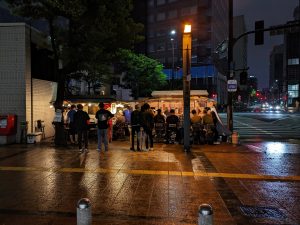
Fukuoka has a culture of yatai, or food stalls, some nearly a century old.

A classic yōshoku dish at a very unfussy eatery.
Saga & Nagasaki
I stayed three days in Fukuoka, so in the middle I took a day trip to Nagasaki and back. On the way there, I stopped at Saga Station, located where else but in Saga City, Saga Prefecture, which has three of their own special nimoca designs available, branded “tsu-tsu-nimoca”. One of the cards features artwork from the 1992 videogame Romancing SaGa (phonetically identical to the name of the town; no relation, but it makes for a cute connection). Another design shows off various school club activities present in the region, and the standard orange one features a child’s drawing of “futuristic transportation” and is, obviously, my favorite design of any IC card I own.
My transfer to the Nishi Kyushu Shinkansen, a completely disconnected shinkansen line in western Kyushu that just began service in 2022, was done at Takeo-Onsen Station. Because it’s not (yet) connected to the main Kyushu Shinkansen which runs north-south from Fukuoka, they run a timetable-coordinated limited express “relay” service called the Kamome where you can hop off and walk directly across the platform onto your shinkansen which is sitting on the opposing track, which leaves right afterward. Technically it’s a transfer, but it’s pretty seamless!
However, I didn’t directly transfer; I left the station and stopped in the cool Takeo City Library, walked to see the nearby giant camphor tree, climbed a random hill with a park on top, and saw the hot springs building (which the station is named after) before heading to catch the next train.
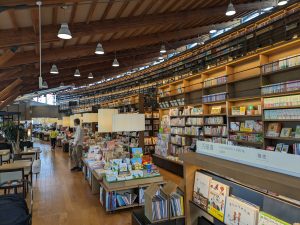
Library slash cafe. They had a pop-up store for Omae wa Umasou da na going on too!
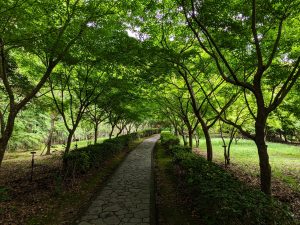
A path of green. Perfect for Lorca.
I arrived in Nagasaki and got their two transit cards immediately, the nagasaki nimoca (special design for the city) and the N+ T Card, a weird combination of something by the mysterious Ntasu Co., Ltd. and Tsutaya‘s T-Points (which have since been renamed to V-Points? they’ve confirmed the design will change so I guess I have to go back at some point!)
I then grabbed some champon for lunch and used up the fare I had to load onto the second of the cards by taking a looooong bus ride up north to the city of Saikai, where I went to the Nagasaki Bio Park, to see the…
And yes, the staff there did know of the song.
I then bussed back to Nagasaki, and in lieu of the shinkansen, took a highway bus back to Fukioka, during which my phone died because I forgot my external battery pack in my hotel. :’)
Kumamoto & Kagoshima
After another day in Fukuoka, I headed south, stopping at Kumamoto for a few hours.
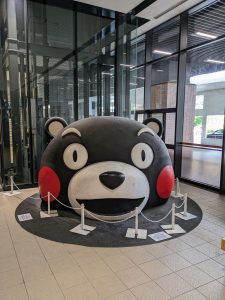
Giant Kumamon head in the station!
In Kumamoto, I was devastated to find that the “Kumamon no IC Card Cashless Plaza” (actually the first floor of a random Higo Bank branch) was closed, since it was a holiday. To my knowledge, this was the only place to buy the Roasso Kumamoto limited-edition design themed around the city’s soccer team, which had been released recently and advertised on their website. So, in a last-ditch effort, I called around, and a very nice woman at the airport was luckily able to confirm that the IC card vending machine there (and only there) did indeed have the cards…….. so I hopped on an hour-long express bus to the Aso Kumamoto Airport. :D
This was my second time at an airport in Japan for solely IC card-related reasons… the first being late last year when I went to Shikoku, got dropped off by local bus on an unlit highway, trekked through the dark, ate incredible sanuki udon after hearing Edelweiss mysteriously playing from an unseen source, finally reached the Takamatsu Airport, bought their exclusive IruCa designs, and the ran to catch my highway bus back into the city with a minute or two to spare. The Kumamoto Airport was less of an adventure than that, but it was still a fun, unexpected detour!

Nice landscapes on the way back to Kumamoto proper. Also got to refund my Kumamon no IC Card balances at the Sakuramachi Bus Terminal & Shopping Center, which helped price-wise.
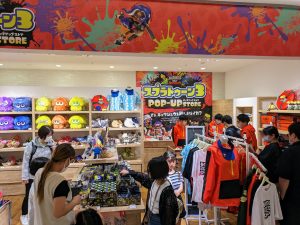
Surprise Splatoon pop-up shop next to Kumamoto Station!!! I dashed in, bought a golden egg keychain, and ran out to catch my next shinkansen again with only a few minutes to spare. This is often my life.
Kagoshima
My trip ended in Kagoshima, a city located at the southwestern tip of Kyushu, overseen by the looming, active Sakurajima stratovolcano.
BUT. I had one more place to stop. JR Kyushu had – god bless this incredible customer service – responded to my inquiry from a few days prior about where to find a limited-edition SUGOCA I had asked about. I’d contacted them telling them about the hobby and my trip, and that stock was out at Hakata Station and all the other places I looked, but hoped there might be some smaller station still with remaining cards. The employee responded to me and asked me to tell them where I was going in the coming days so they could check around those areas for me (!) …and lo and behold, there were two places around Kagoshima with the cards. One was even a shinkansen stop on the way there from Kumamoto: Sendai Station (not the Sendai up in Miyagi, different kanji!)
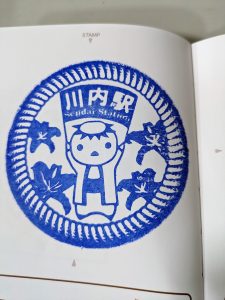
Eki-stamp. I guess kappa are said t be around here? The station employee didn’t know why; she had just been transferred here from the neighboring prefecture, lol.
When I asked about the cards at the ticket office, the employee claimed they weren’t for sale, and said that they didn’t sell them anymore, but I showed her the customer support email saying that it would be possible for me to get one there… So, after a number of long phone calls, she was able to find a stack of them in back, undid the wrapping, and loaded them into the machine to activate & sell to me. So grateful and happy that it worked out!
Sendai is one of the smaller stops on the Kyushu Shinkansen, and most trains skip it, so I got to take the Tsubame to get there, the slowest of the shinkansen trains running that route. I learned that the rolling stock they use are 800 series trains and that they are very different to any shinkansen I had ridden on before!!
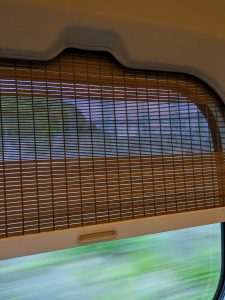
Oh my god, the blinds were made from bamboo (they’re sudare).
Arriving at Kagoshima, my base fare ticket had been used up. But Japan being Japan, of course you don’t have to let it get eaten by the fare gate and taken from you forever. You can just ask the station staff to let you leave manually, instead, and they cancel your ticket out by giving it a commemorative stamp.
Kagoshima in May had very Hawaiʻi-esque weather (see: humid… though nothing compared to what it’s like outside now in the summer). I took the fancy Ibusuki no Tamatebako train down to the town of Ibusuki known for their hot sand baths, the inspiration of Lavaridge Town in Pokémon Ruby/Sapphire/Emerald… but when I got there, It was a 3+ hour wait for spots to be free, and I don’t really like being hot anyway, so I said screw it and returned back to Kagoshima shortly after. They had some cute Pokémon manhole covers, though, with all the different “Eeveesuki” Eeveelutions on them. The southernmost JR station was also not too far away, but unfortunately trains come infrequently in places like this and the schedules didn’t work out.

Free-use reading nook with bookshelves. They also had an actual tamatebako on the train.
RapiCa and Iwasaki IC Card are the two transportation cards in Kagoshima. Both cost ¥3000 instead of the standard ¥2000, because fuck you they’re a monopoly in the area, and on top of that, they’re not Mutual Use (and Mutual Use cards can’t be used there!) I picked up all variants of those, and then spotted this (below) amazing knockoff Suica poster in the Nangoku Kotsu Bus Terminal, made with Irasutoya illustrations.
Finally, just a few hours before my long shinkansen home, I was able to meet up with the most dedicated & knowledgeable Japanese IC card collector there is, @sunagawahiroyuk! He’s from Fukuoka but was gone traveling at the time I was there, so we had missed each other, but then realized we by chance were going to both be in Kagoshima at the same time (!) so we got some delicious tonkatsu for lunch, which the prefecture is known for.

Suica no pachimon penguin.
Needing to change shinkansen once on my 5 hour journey home, instead of transferring at a more popular/busy station like Shin-Osaka, Kokura, or Hakata, I decided to do a transfer at Himeji, where I’d never been before. This was fun because 1) not all shinkansen stop there, and there’s no platform screen gates, so every few minutes a train would come whizzing through at hundreds of kilometers per hour, and 2) the eki-stamp happened to be right next to the fence dividing the inside-the-ticket-gates area from the outside, so I was able to reach my long arms over and stamp my book. Got some fun looks for that one.
And here’s my collection as it stands today! 31 new cards obtained on this trip. But, after putting off writing this for nearly three months since then, that’s now due to significantly change in about a week… 👀

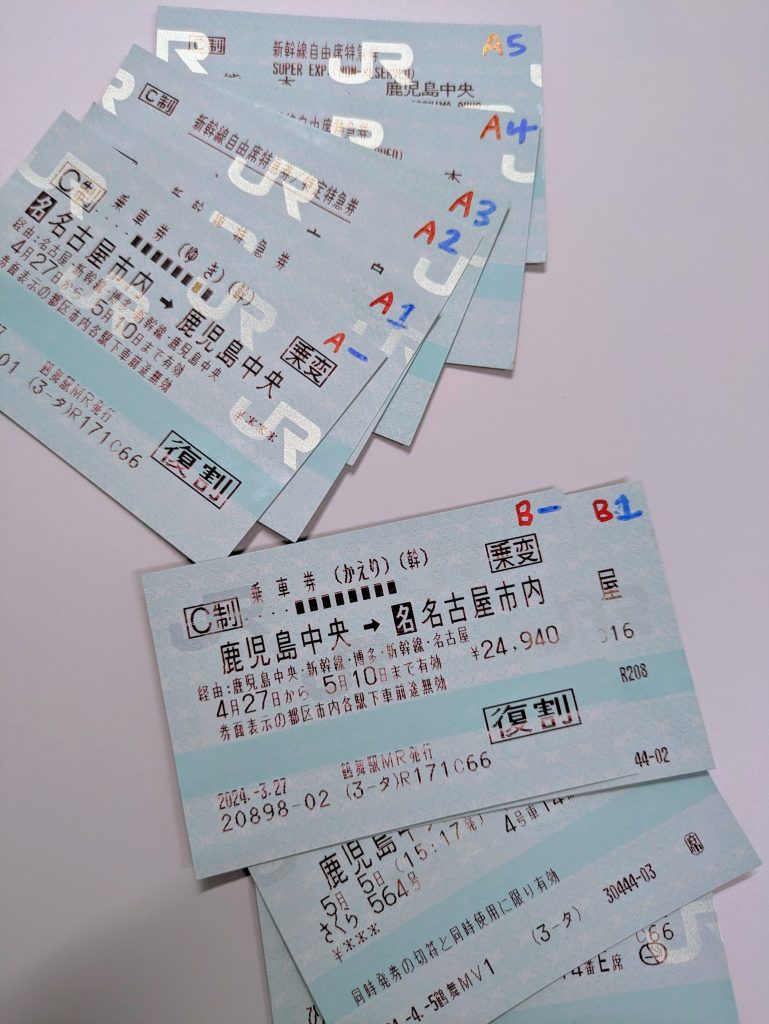
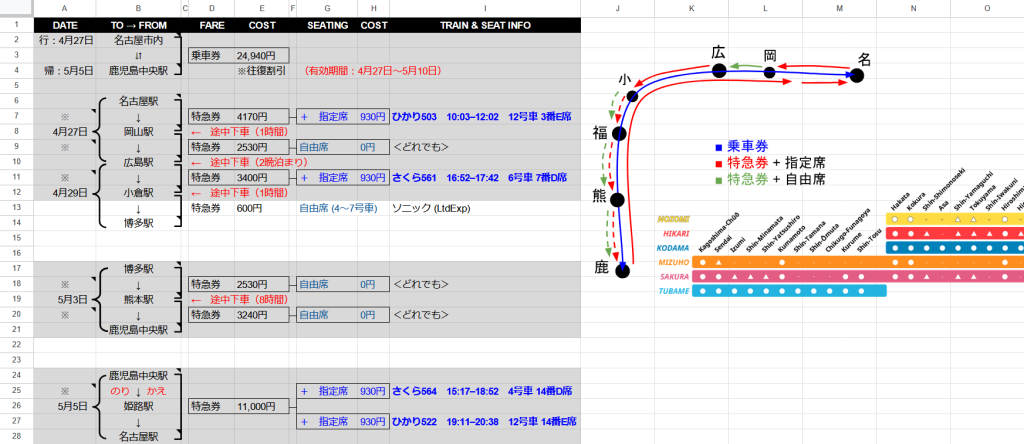


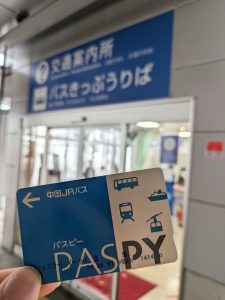
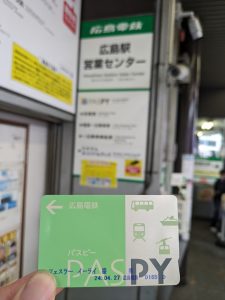
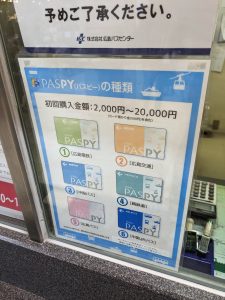


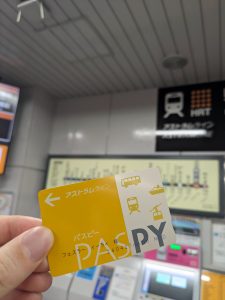
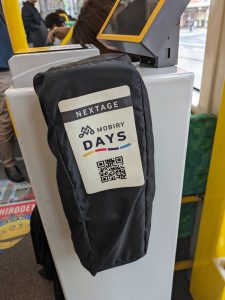

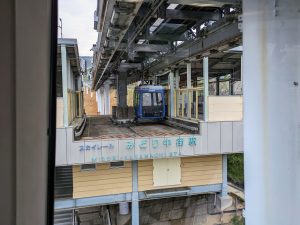

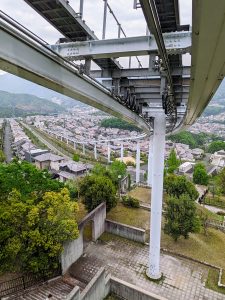

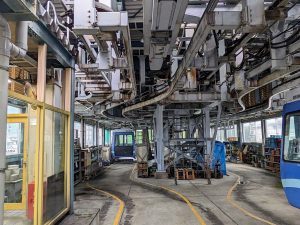
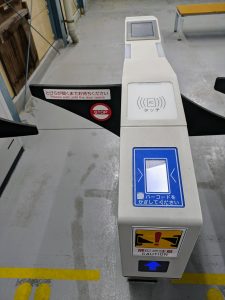
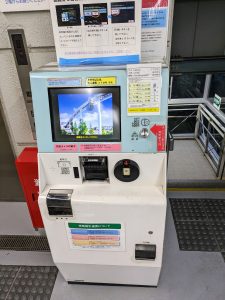
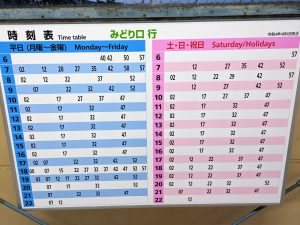
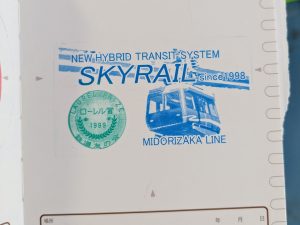

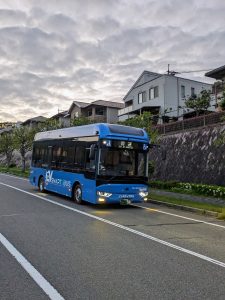
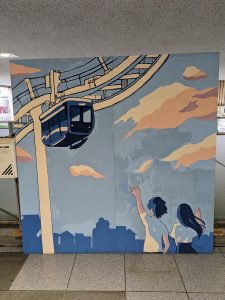
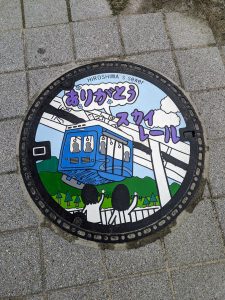
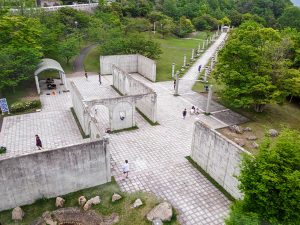
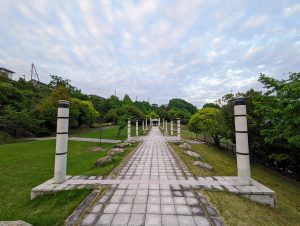
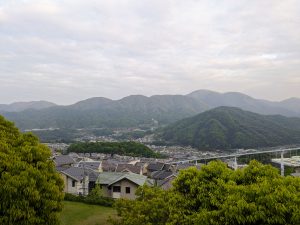
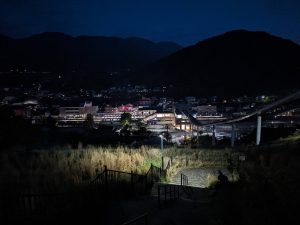
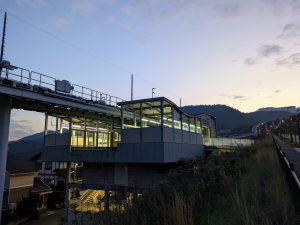

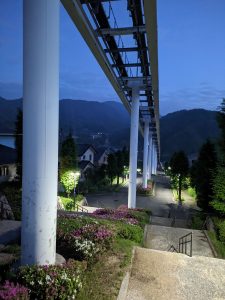
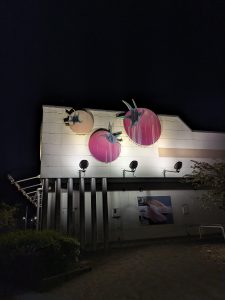
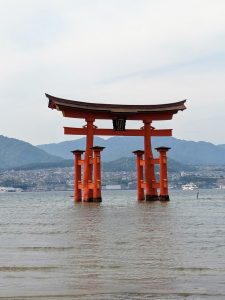
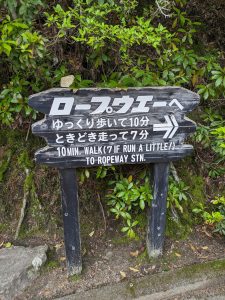
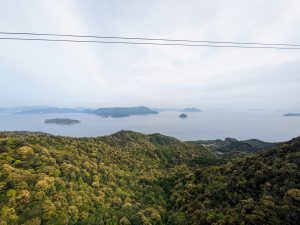
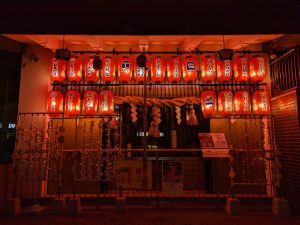
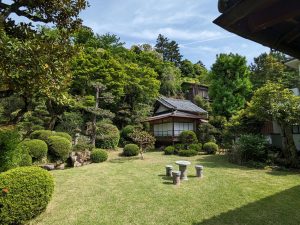
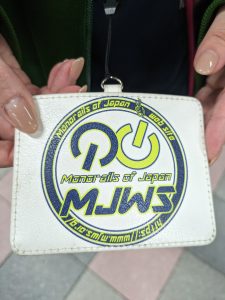
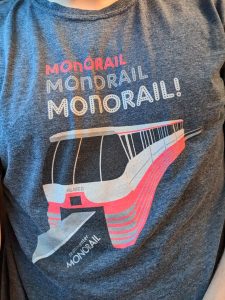
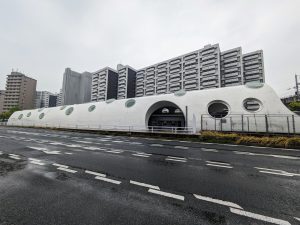
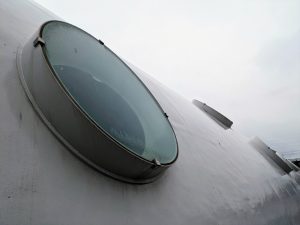
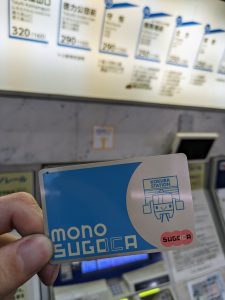
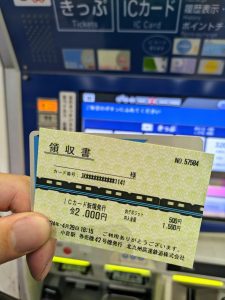

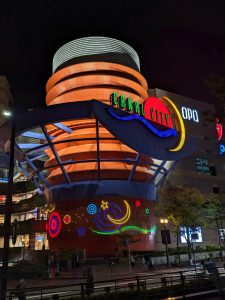
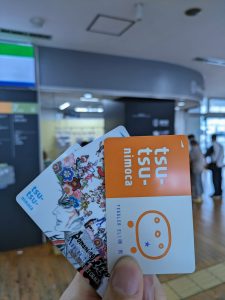

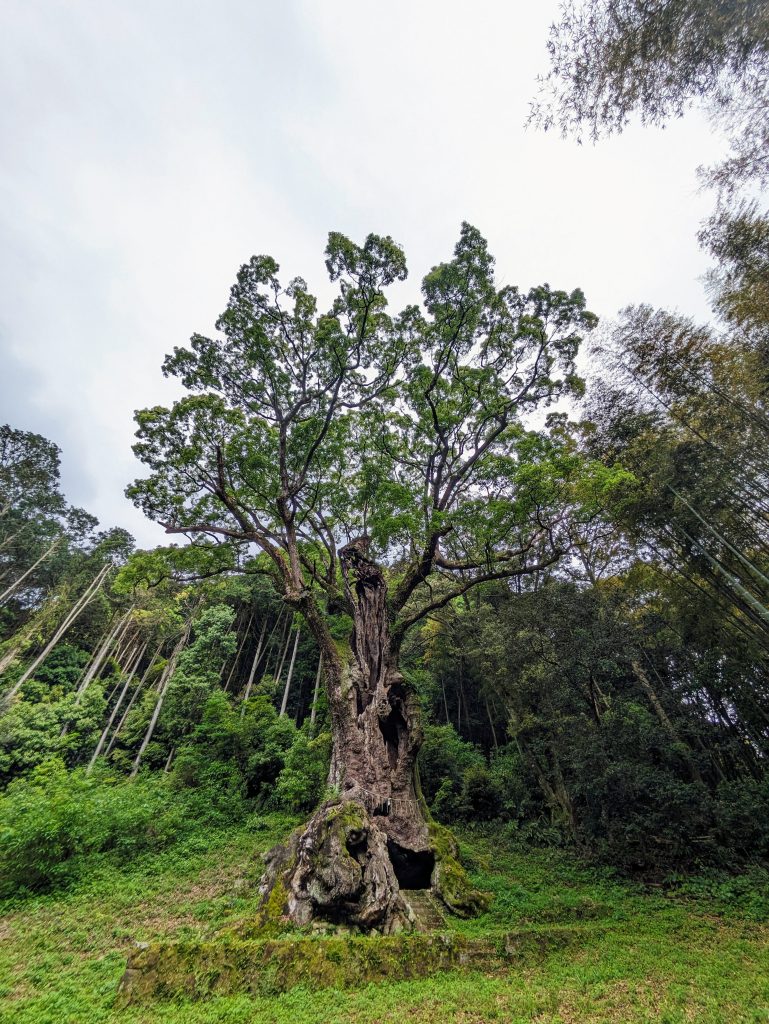
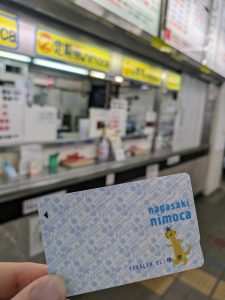


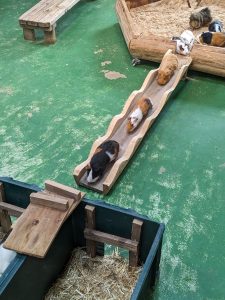
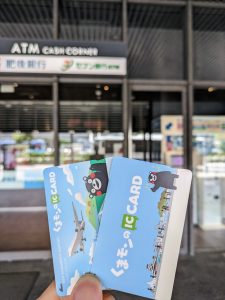
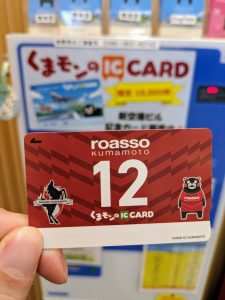
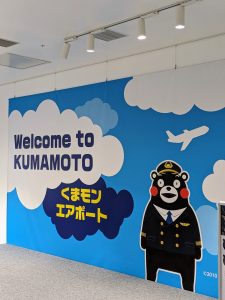
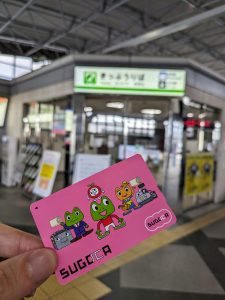
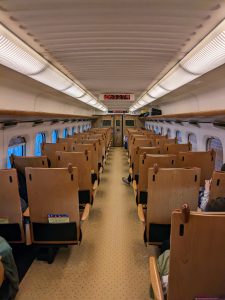
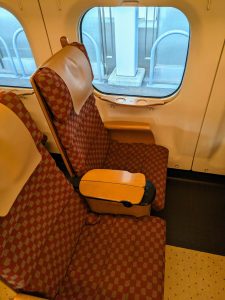
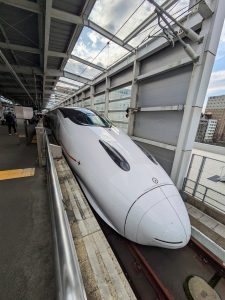
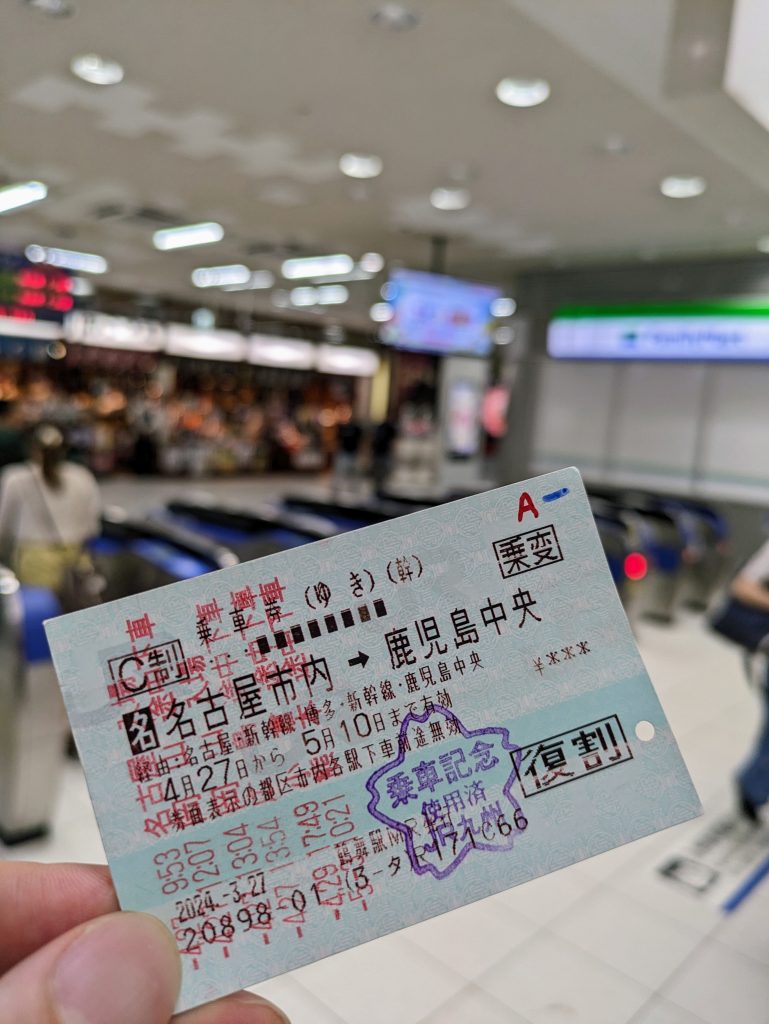
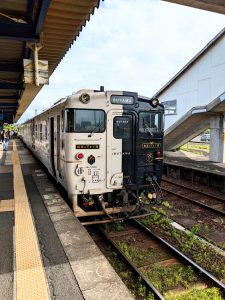

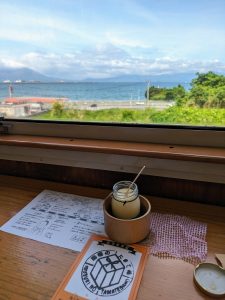
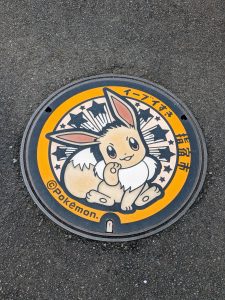
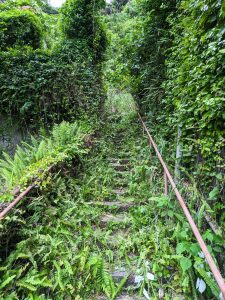

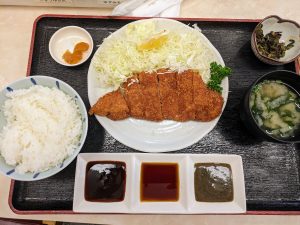
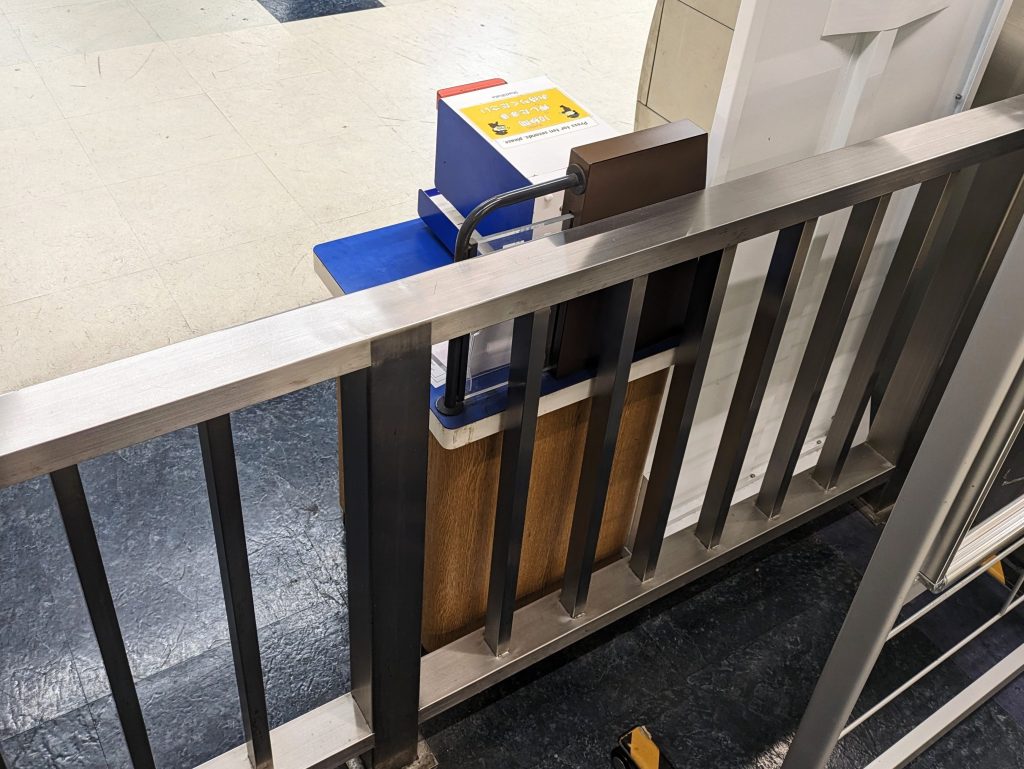
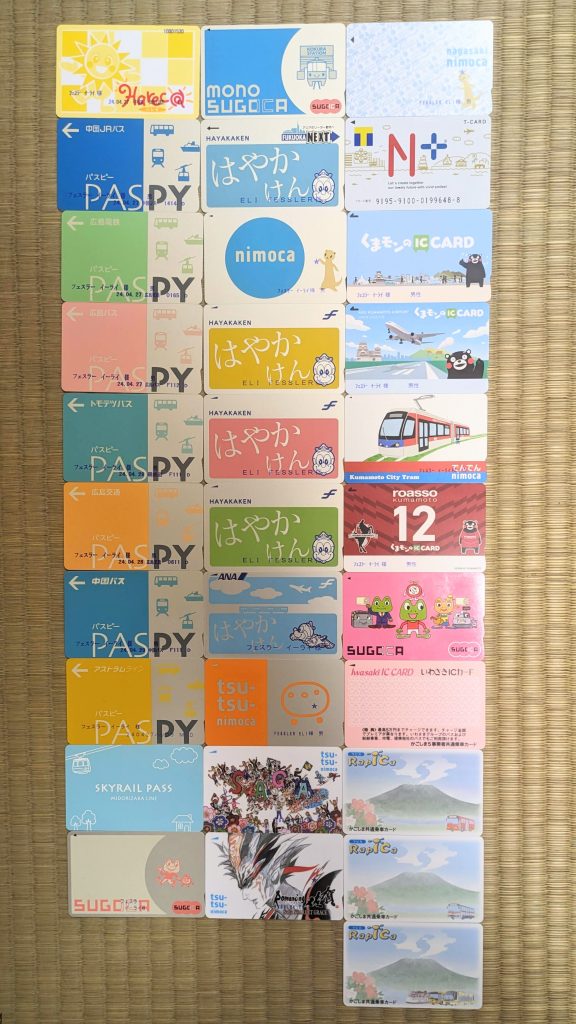
I got KRZ vibes reading about your visit to Skyrail Town + looking at your photos from there ♞
“I stuck around riding Skyrail, wandering the town, chatting with a few people, and taking pictures until night, and then basked in the darkness as the glowing vehicles occasionally passed overhead. Bugs, electricity, and then silence.”
KRZ MY FAVORITE PIECE OF INTERACTIVE MEDIA OF ALL TIME………… hahahaha I think I probably unconsciously channel it at all times, given the impact it’s had on my life, but I can totally see it!! Wow, now I wish I’d have walked around the parks more at night. But that walk down the hill really was KRZ-esque. I might post photos on the subreddit now. I love your connection! And thank you so much for reading!